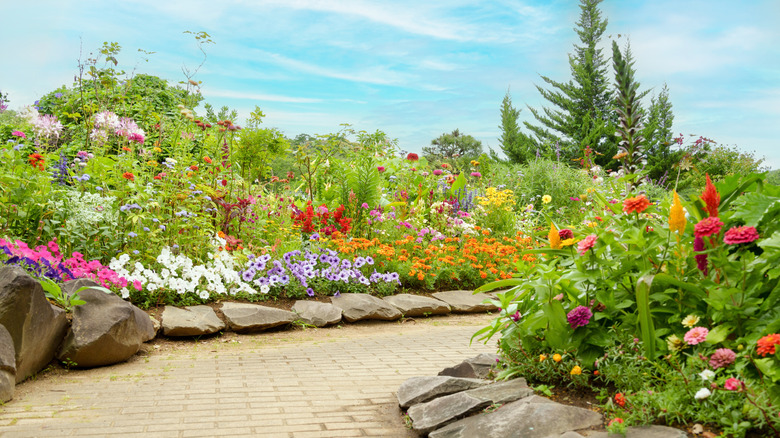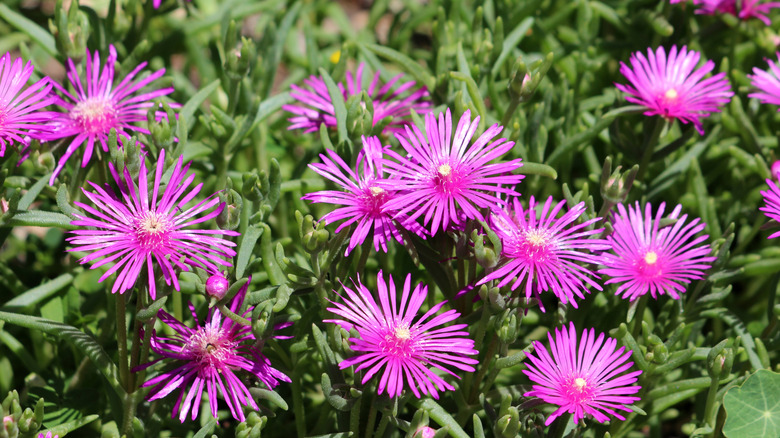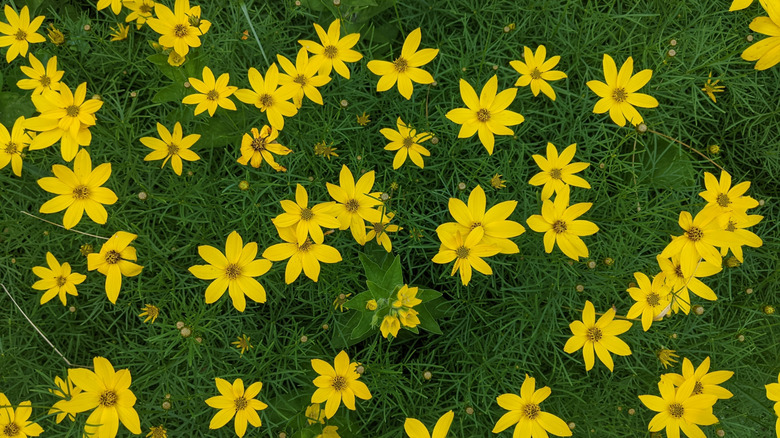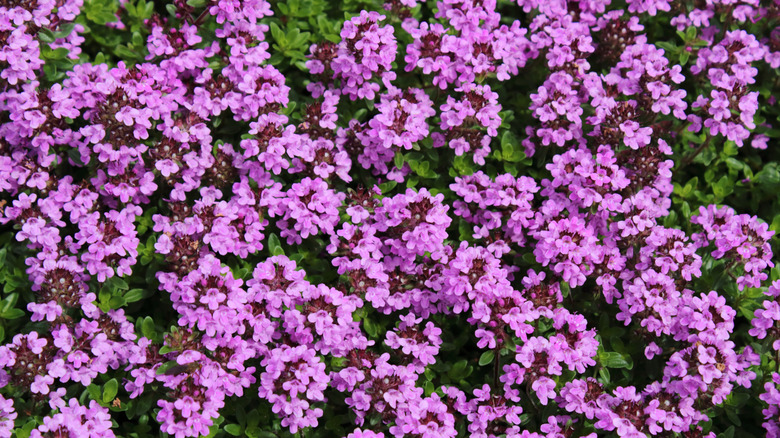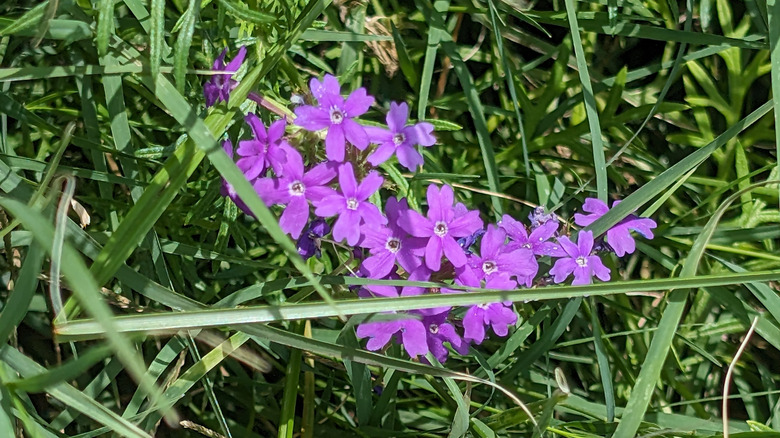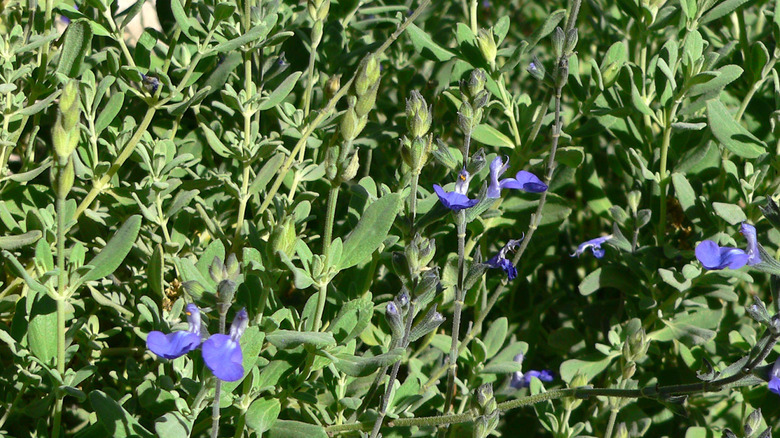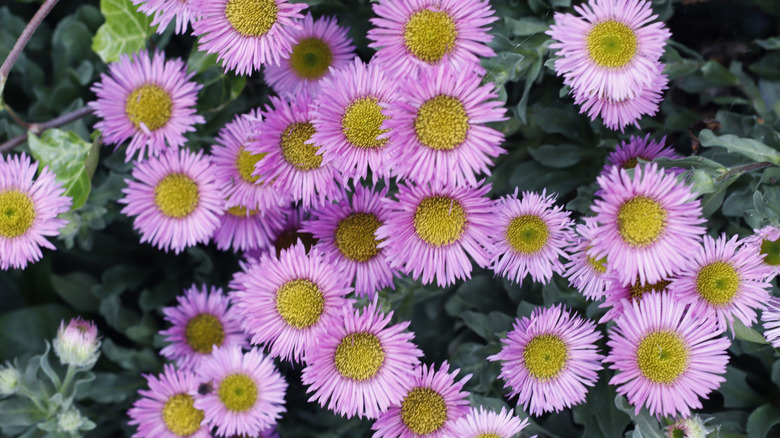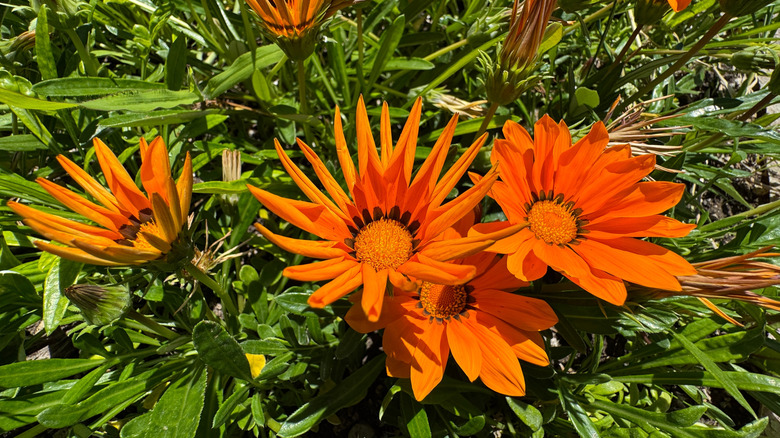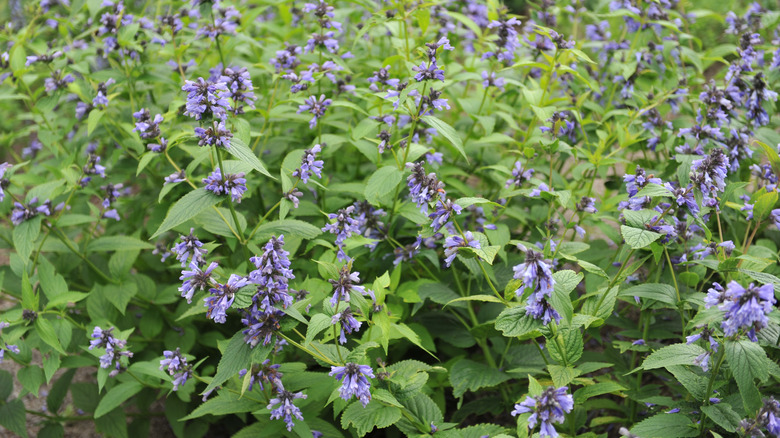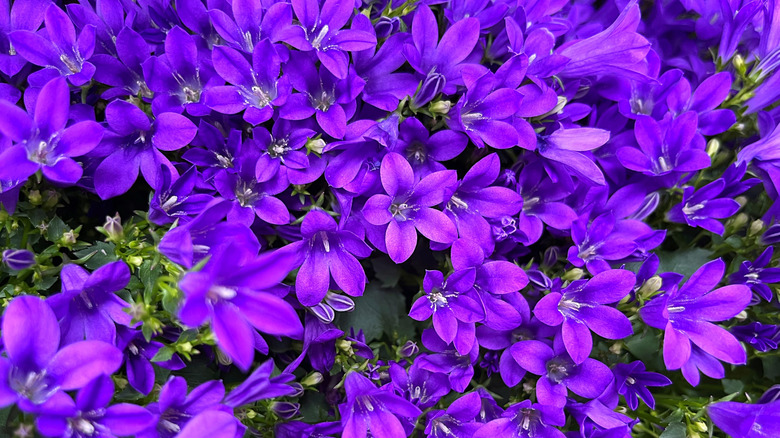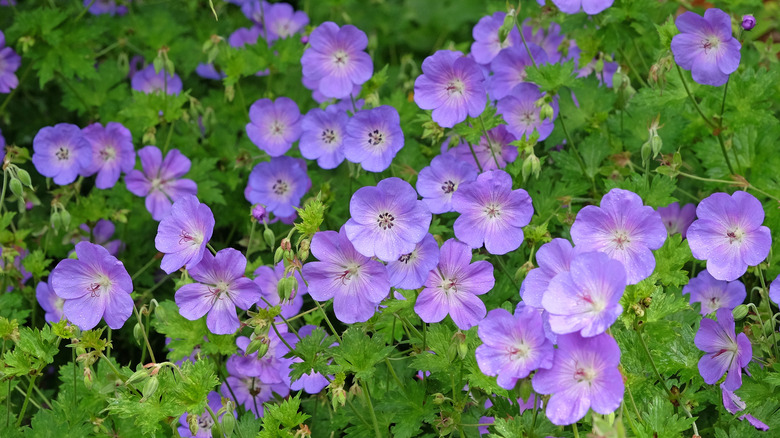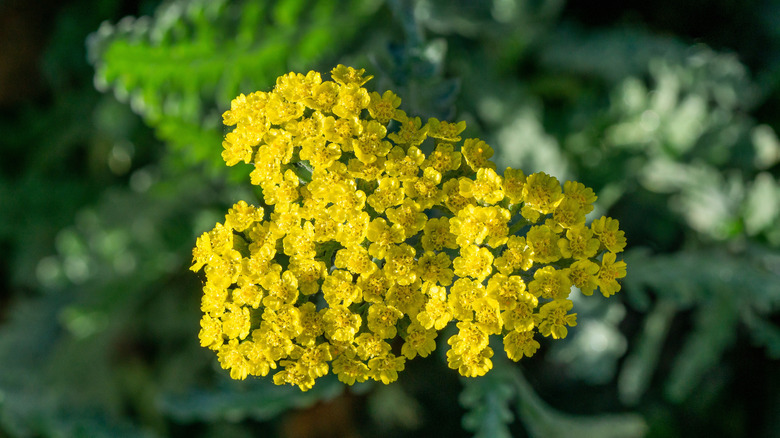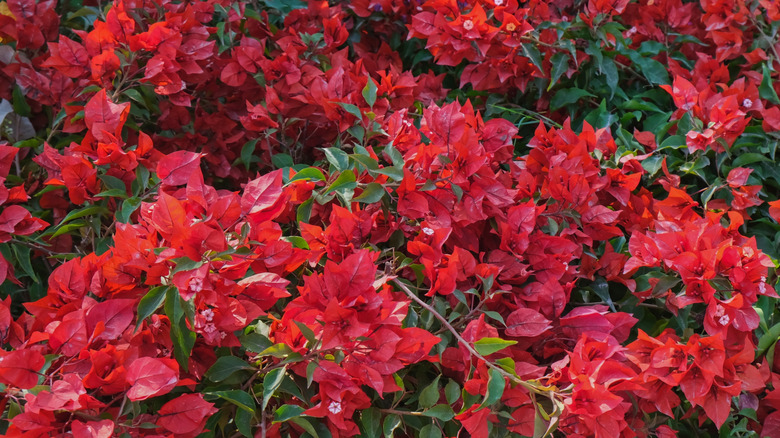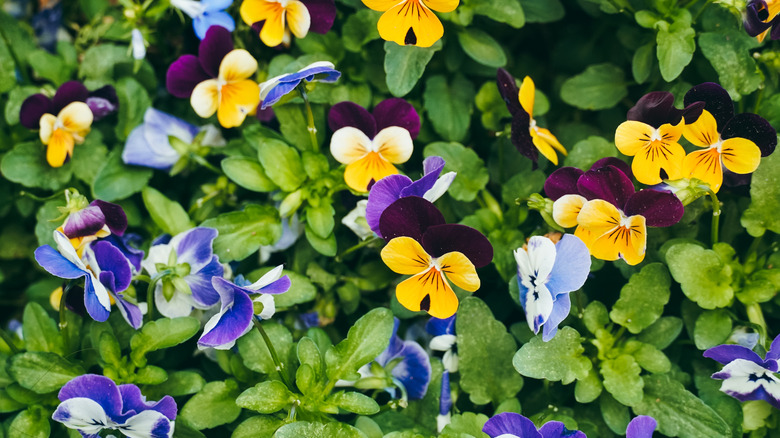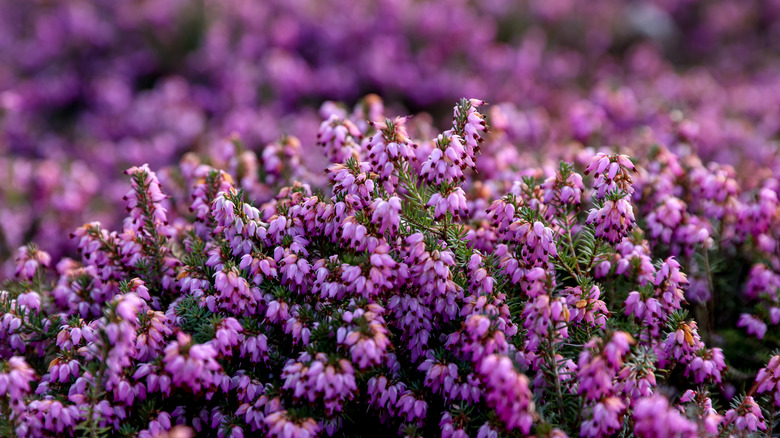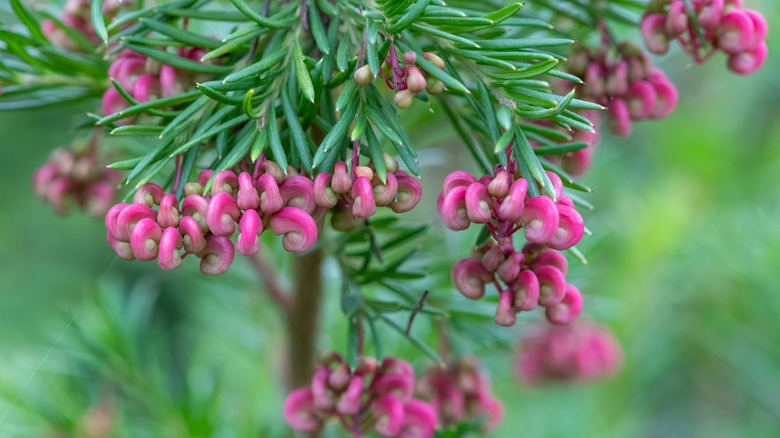22 Flowering Ground Covers That Bloom Multiple Times A Year For Continuous Color
If you want to create a thriving, low-maintenance garden, ground covers are the way to go. These plants help out by suppressing weeds and controlling erosion, but many ground covers are also really stunning flowers. Certain ground covers, such as trailing gazania and creeping thyme, can bloom multiple times a year, which allows your garden to be full of color throughout the seasons.
When picking the best ground cover that blooms multiple times in a season, consider your climate, the colors you wish to bring into your yard, and the type of soil you have. If your garden has dappled shade, garden phlox or dalmatian bellflower may be perfect for you. However, if your garden has full sun and a warm, dry climate, you may wish to opt for a drought tolerant ground cover that thrives even in the harshest sun, such as moss verbena or hardy ice plant. From the striking yellow blooms of creeping zinnia to the more subtle, smaller flowers of blue star creeper, you are sure to be able to find the perfect flowering ground cover to suit your yard, whatever your style.
Hardy ice plant
The hardy ice plant (Delosperma cooperi) blooms in shades of pink and purple from June to September, creating a carpet of color throughout the year. With a spread of up to 2 feet, the hardy ice plant makes for an excellent ground cover in warmer, dry regions. It is hardy in USDA Hardiness Zones 6 to 10 and needs dry, drained soil under full sunlight. Once it has settled in, the hardy ice plant can deal with drought and heat. It does well in a range of soils, except for clay types.
Creeping phlox
If you are looking for a ground cover plant that loves shade, creeping phlox (Phlox stolonifera) may be perfect for you. It is a delightful yard addition, with its lavender purple blooms creating cottage garden vibes. It is a spreading perennial that creates a mat of foliage and flowers to enrich the soil and benefit surrounding plants. Creeping phlox blooms from June to September and is suitable for Zones 5 to 9. It needs moist, well-drained soil and can do well in both full sun and shade.
Whorled tickseed
Although many different types of tickseed are used as ground cover, whorled tickseed (Coreopsis verticillata) is one of the best when it comes to repeat blooms. This fast-growing plant blooms from June to September, brightening up your yard with its beautiful yellow flowers. It is suitable for planting in Zones 3 to 9 and thrives under full sun in well-drained soil. When whorled tickseed is planted in looser soil, it can spread well to create a great cover. To help it bloom in the later months, deadheading is advisable.
Creeping thyme
With its delicate pink and purple flowers that bloom from June until September, creeping thyme (Thymus praecox) is a wonderful ground cover option if you are looking for multiple blooms. It needs full sun and well-drained soil to thrive and is suitable for Zones 5 to 8. If you are bringing creeping thyme into your garden, avoid planting it in any soil that is overly wet or moist, as it can rot in these conditions. As a low-maintenance plant, you don't have to do much to boost its flowering. Simply enjoy its beauty!
Moss verbena
Moss verbena (Verbena aristigera) provides you with a mat of purple blooms from spring into fall, with its clusters of small flowers creating a compact shape. It is suitable for Zones 6 to 12 and spreads up to 6 feet to create dense coverage. As it is native to South America, it is pretty tough when it comes to heat and sunshine, and tolerates drought well. It prefers full sun, but it can be grown in partial shade. Although it is a low-maintenance plant, deadheading moss verbena can help it produce more blooms.
Germander sage
Salvias are a go-to perennial for many gardeners, and germander sage (Salvia chamaedryoides) is a fantastic option for a flowering ground cover. With bright blue blooms that arrive in June and hang around until September, germander sage brings color and texture to your yard. It thrives in Zones 7 to 10 and prefers dry, well-drained soil. It does well in full sun or partial shade and can spread up to 3 feet. Deadheading after the first flowering will encourage germander sage to produce more of its beautiful blooms.
Seaside daisy
For a more whimsical look, consider bringing seaside daisy (Erigeron glaucus) into your garden as ground cover. Although it is a fairly small plant with a maximum spread of 2 feet, its delicate pastel blooms with their cheery, bright yellow centers make it a worthwhile yard addition. It flowers in winter, summer, and spring, and is suitable for growing in Zones 3 to 7. Seaside daisies need a spot in well-drained soil in full sun to thrive. If you want your seaside daisies to carry on blooming, deadhead them regularly.
Trailing gazania
Trailing gazania (Gazania rigens) has beautiful orange flowers that bloom from spring until fall, brightening up your yard throughout the seasons. Hardy in Zones 9 to 11, trailing gazania needs full sun and constant moisture to thrive. However, it can be sensitive to the heat. If your climate gets too hot and humid during the summer months, it may stop flowering. It isn't a very big ground cover, spreading to only about 1 foot, so it would suit smaller garden beds. Deadhead trailing gazania regularly to help it continue to bloom.
Catmint
There are a few different types of catmint you can bring into your garden, including short-stalked catmint (Nepeta subsessilis) that has rich, blue blooms, and walker's low (Nepeta racemosa) that has delicate lavender flowers. Most varieties and cultivars of catmint start flowering in late spring and continue to do so until fall, as long as you stay on top of the deadheading. They are suitable for growing in Zones 4 to 8 and can thrive in both full sun and partial shade. Some varieties are more sensitive to drought than others.
Russian sage
Like germander sage, Russian sage (Salvia yangii) is a type of salvia that can be used as ground cover as it is low-maintenance and tolerant of drought. It produces tall spikes of small purple-blue flowers that bloom in summer and fall. Russian sage can be grown in Zones 5 to 9 and has a spread of 4 feet. If you choose to bring it into your yard, make sure it has a spot in well-drained soil under full sun. They will need to be watered well during their first season to help them establish themselves.
Dalmatian bellflower
Dalmatian bellflower (Campanula portenschlagiana) is a fast-spreading ground cover with a maximum spread of 1 foot. In the spring, its foliage gets covered with loads of small, bell-shaped blooms in purple and blue. If looked after well and deadheaded throughout the season, the plant will have a longer bloom period and produce flowers into the fall. Dalmatian bellflower is suitable for Zones 4 to 8 and prefers dappled shade. It can be quite sensitive to heat, so you may want to avoid this ground cover if you live in a very warm, humid climate.
Hardy geranium
There are around 300 species of hardy geraniums, and you can find varieties that bloom in hues of purple, blue, pink, red, and white. Many cultivars will flower multiple times a season, such as geranium 'Orion' and geranium 'Patricia,' which both have a primary bloom in late spring and a second flush later on. You can grow hardy geraniums in Zones 5 to 8 and need moist, well-drained soil. They can do well in full sun and partial shade. Deadhead them as soon as the flowers turn to promote a second bloom.
Poppy mallow
With its rich magenta blooms, poppy mallow (Callirhoe involucrata) is a beautiful ground cover to consider bringing into your garden. It spreads to around 3 feet, with flowers appearing from mid-spring until fall. Poppy mallow is suitable for Zones 4 to 8 and prefers full sun and well-drained soil. It doesn't need that much water and is fairly tolerant of drought once it settles in. The foliage will die back in the fall, but it will be back in the springtime to decorate your yard with its beautiful blooms.
Garden pink
Garden pink (Dianthus plumarius) creates a compact cover for your garden and has ruffled blooms in hues of pink, red, and white. It can spread to around 2 feet, creating a beautiful bed of pastel shades and foliage. Suitable for Zones 3 to 9, garden pink can do well in full sun or partial shade. They bloom in the springtime, and can flower a second time if you deadhead them after they have turned. Garden pinks are susceptible to crown rot and fungal rot, so ensure they are dry between waterings.
Blue star creeper
With its dainty blue star-shaped flowers that cover its foliage profusely in the spring and summer months, blue star creeper (Isotoma fluviatilis) is a gorgeous ground cover. It is a low-growing, creeping perennial that spreads to around 2 feet to create a carpet of greenery for your garden beds. Hardy in Zones 6 to 8, blue star creeper enjoys partial shade and moist soil. You may want to deadhead and trim it to tidy it up, but it will carry on blooming by itself throughout the summer.
Creeping zinnia
If you are looking for a flowering annual ground cover, creeping zinnia (Sanvitalia procumbens) is a fantastic choice. It usually spreads to just under 2 feet and produces beautiful, sunny yellow blooms that cover the foliage from spring right until the first frost. Creeping zinnia can be grown in Zones 2 to 11 and is best when the seeds are sown directly in the garden a few weeks before the last frost. It needs full sunlight and good drainage to thrive, but it is very low-maintenance once it gets going.
Woolly yarrow
Woolly yarrow (Achillea tomentosa) is an intriguing perennial, with long, woolly, dense leaves and clusters of yellow flowers. It blooms in the spring and summer months, and can produce more flowers if you keep on top of the deadheading. A fall bloom may occur if you cut the plant back to its basal leaves after its first flush of flowers. You can grow woolly yarrow in Zones 3 to 7, and it prefers full sun and well-drained soil. When happy, woolly yarrow can spread to around a foot and a half.
Candytuft
If you are looking for a white flowering ground cover, candytuft (Iberis sempervirens) may be perfect for your yard. It produces striking white blooms in the springtime, which can last well into the summer months. Deadheading the spent flowers can produce a second bloom later on in the year. Candytuft is hardy to Zones 3 to 8 and prefers full sun and moist, well-drained soil. It doesn't do well in overly wet conditions and will need to be mulched over winter if you live in a colder region.
Dwarf bougainvillea
Varieties of dwarf bougainvillea can be very effective as ground cover, bringing thick foliage and color into your yard. For example, the 'Crimson Jewel' cultivar is a smaller variety that produces striking red blooms throughout summer and fall. Bougainvillea is hardy to Zones 9 to 11 and is tolerant of drought and heat. They are best when grown in rich, well-drained soil under full sun. To help your bougainvillea carry on producing more blooms throughout the year, make sure it's getting enough sunlight and fertilize it once a week.
Pansies
Pansies (Viola x wittrockiana) are hardy biennials that can be used as ground cover. They are famously long bloomers, with flowers appearing in spring, summer, fall, and winter. If you want a winter and early spring bloom, plant pansies in the fall. They need full sunlight in moist soil to thrive and can be planted in Zones 6 to 10. However, strong heat does make them lose their blooms, so it is common for them to fade in the summertime. Deadheading them regularly will allow the pansies to continue to flower.
Winter heath
If you are looking for a long winter bloom, winter heath (Erica carnea) is a great choice. It forms a dense mat that can spread up to 1 foot and 6 inches, making it a perfect ground cover for slopes. It can be grown in Zones 7 to 9 and produces small, pink flowers in winter and spring. It doesn't need much attention to help it bloom, but pruning winter heath in spring after its flowering is recommended to keep it looking good. Plant winter heath in sandy, acidic soils with decent drainage.
Coastal gem
Coastal gem (Grevillea lanigera) is a spreading evergreen shrub that blooms in winter and spring. Producing bright pink and red flowers that grow on furry, long stems, this plant is an interesting addition to your garden. It can spread up to 10 feet, creating a fantastic ground cover for larger areas. It can be grown in Zones 8 to 11 and thrives in full sun or partial shade. Coastal gem can tolerate both wet and dry weather for long periods of time once it has settled in, as long as the soil is well-drained.
